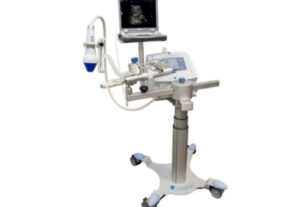A new report published as part of the National Program for Quality Indicators in Community Healthcare for 2023 reveals concerning changes in public health in Israel in the shadow of the war. The report points to the overuse of sleep and anti-anxiety medications, high rates of obesity and smoking, a decrease in early breast cancer screening, and significant gaps between displaced residents of the periphery and the rest of the country.
The National Program for Quality Indicators in Community Healthcare began in 2004 to provide the public and policymakers with information on the quality of medical care provided by health funds and to give an overall health status picture of all residents. The program operates under the leadership of the National Institute for Health Policy Research and is supervised by the Hadassah School of Public Health and Hebrew University.
The trauma in the shadow of the war is also reflected in the mental health status of Israelis: The report’s data show a sharp increase in the use of sleep, anti-anxiety, and antidepressant medications. In 2023, there was an increase of about 6% in the consumption of antidepressants and an increase of 3.5% in the use of sleep and anti-anxiety medications compared to the previous year.
The report notes that the increase occurred throughout the country, with particularly high rates in the north and center, in cities such as Tel Aviv and Ramat Gan. Peripheral areas like the Safed and Jezreel Valley districts also showed high usage rates. The use of antidepressants and sleep medications was higher among women than men and among populations of higher socioeconomic status.
The report describes a continued trend of rising obesity rates among the population in Israel, with the situation particularly concerning among teenagers. In 2023, there was a further increase in obesity rates among young people aged 14-15, with the obesity rate reaching 13.2%, compared to 12.8% in 2022. Obesity is especially prevalent among teenagers from lower socioeconomic backgrounds, with obesity rates of 17.2% in boys and 13.1% in girls belonging to these strata. The upward trend in weight is also evident among the adult population, with about 50% of Israelis being overweight or obese.
The link between obesity and morbidity is also emphasized in diabetes morbidity data: The rate of diabetes in adults rose to 10.5% in 2023 compared to 10.3% in 2022. Particularly high rates were observed in the south and north of the country, with Nazareth, Hadera, and Western Negev leading the morbidity rates. In contrast, Tel Aviv and Ramat Gan showed the lowest rates.
Smoking
According to the report, about 21% of Israelis aged 16-74 smoke, indicating a slight increase compared to 2021, when the smoking rate was 20.9%. The smoking rate is particularly high among men (29.3%) compared to women (13.5%), with significant gaps between different socioeconomic classes. Men from lower socioeconomic backgrounds smoke almost twice as much as men from higher backgrounds, while among women, the trend is reversed: women from higher socioeconomic backgrounds smoke more than those from lower backgrounds. The highest smoking rates were recorded in the Nazareth, Hadera, and Acre districts, while cities like Ramat Gan and Tel Aviv recorded the lowest smoking rates. Among women, the cities of Holon, Be’er Sheva, and Haifa lead the list of smokers.
Mammography
The report points to a concerning decrease in the rate of mammography tests for early detection of breast cancer. In 2023, only 70.5% of women aged 50-74 underwent the test, compared to 71.8% in 2022. This decrease occurs mainly among women from lower socioeconomic backgrounds, with a performance rate of only 63.4%, while women from higher backgrounds showed a performance rate of 75.2%. In the Arab and ultra-Orthodox populations, relatively low-performance rates were also recorded, with 59.4% and 65.9%, respectively.
The report also notes geographical gaps in test performance: In cities such as Petah Tikva and Haifa, high-performance rates were recorded (over 73%), while in areas such as the Golan Heights and Jerusalem, performance rates are lower, with 67.7% and 62.2% respectively.
On the other hand, there was an encouraging increase in early detection tests for cervical cancer. In 2023, about 68.7% of women aged 24-52 underwent the test, compared to 67.2% in 2022. Here, too, the influence of socioeconomic status is evident, with women from higher backgrounds performing the test at a rate of 80.8%, compared to only 51.1% among women from lower backgrounds.
Antibiotic use
The report describes a concerning increase in antibiotic use in Israel, with 754 prescriptions per 1,000 people recorded in 2023, compared to 674 prescriptions in 2021. The increase is particularly notable among populations from lower socioeconomic backgrounds, with high rates in districts such as Nazareth and Acre.
At the same time, there was a dramatic decrease in flu vaccination rates among the elderly population. In 2023, only 54.1% of those aged 65 and over were vaccinated, compared to 60.6% in 2022. The decrease in vaccination rates is a continuation of a long-term trend, as in 2020, almost 70% of adults were vaccinated.
“The report’s findings are beginning to reflect the impact of the war that broke out on October 7 on some of the indicators, and reveal concerning trends regarding citizens’ health,” says Prof. Nachman Ash, chairman of the National Institute for Health Policy. “It can be estimated that in 2024, we will see further damage to public health due to the continued fighting in various sectors. It is important that the healthcare system works to curb these trends as was done during the corona pandemic and afterward.”



